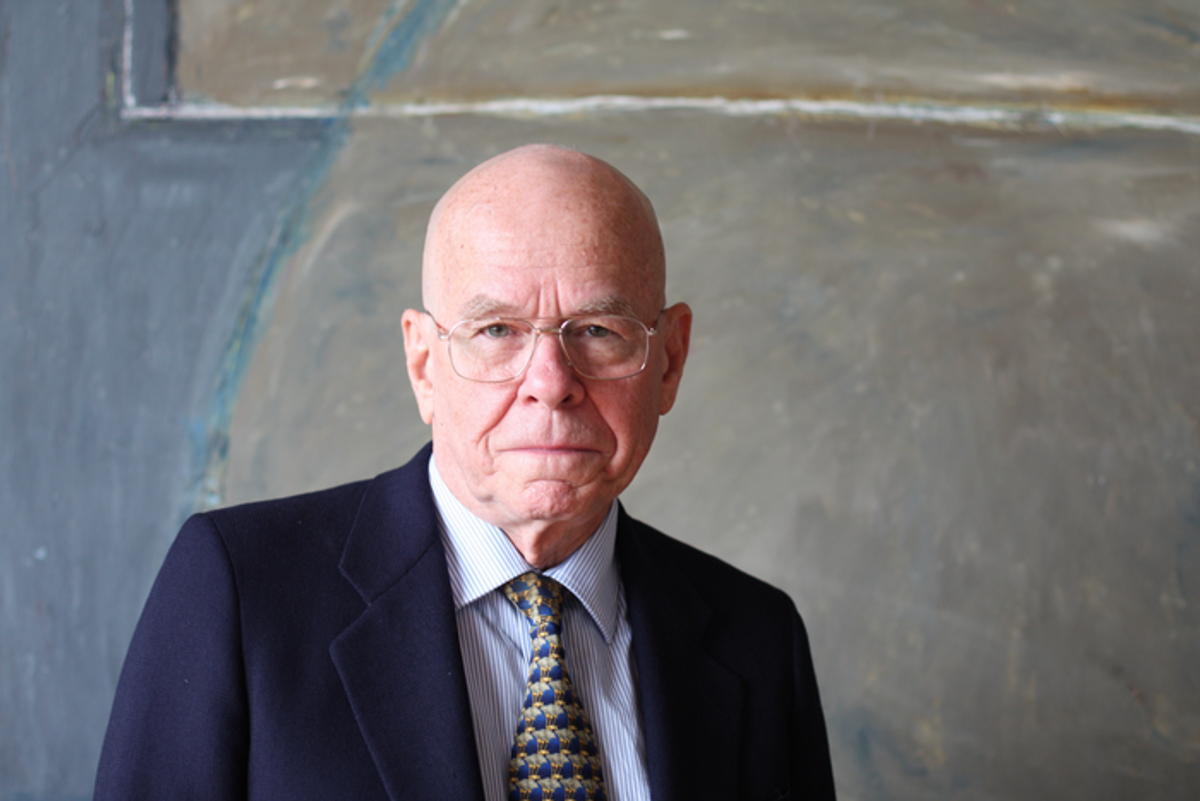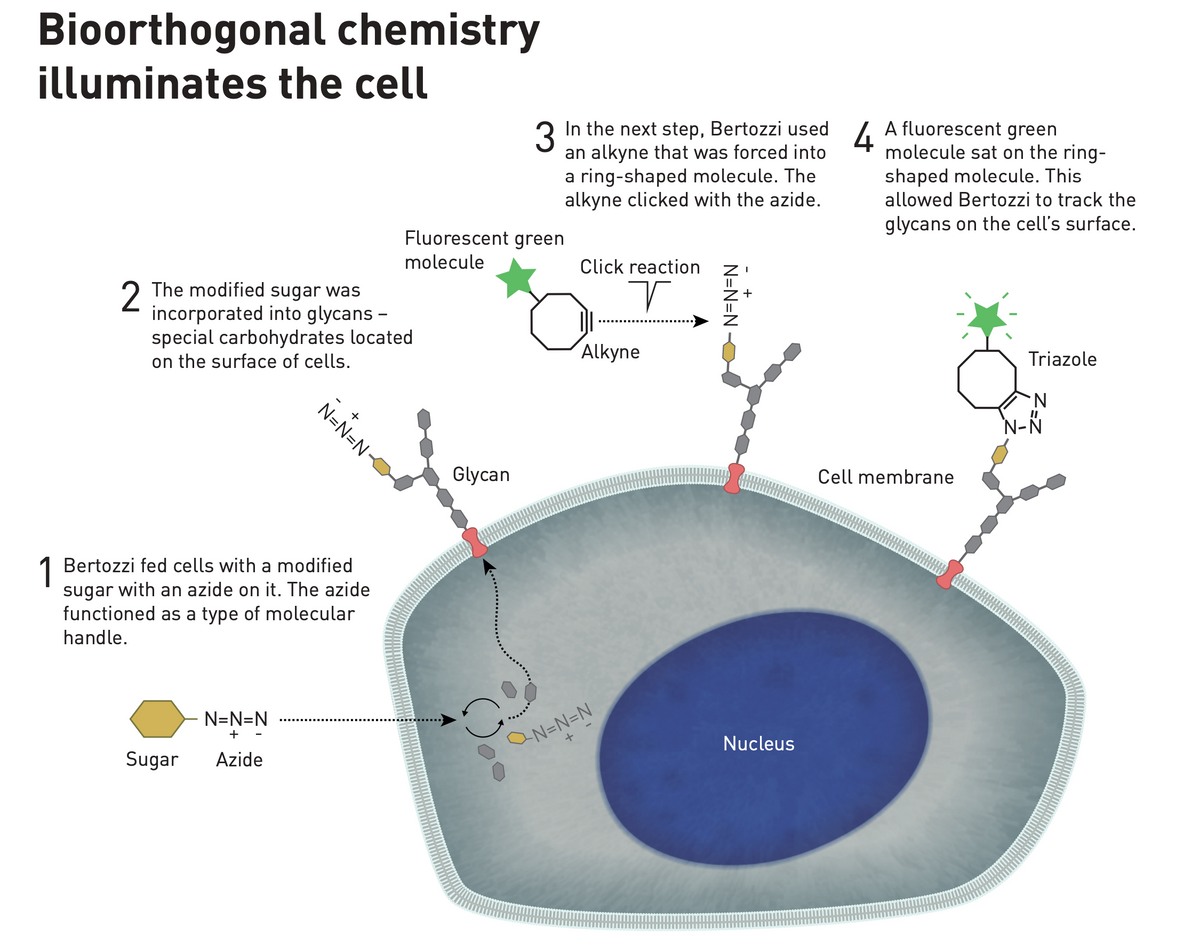ABOVE: Carolyn Bertozzi, Morten Meldal, and K. Barry Sharpless © NOBEL PRIZE OUTREACH. Ill. NIKLAS ELMEHED.
The 2022 Nobel Prize in Chemistry goes to two researchers who pioneered a new way of assembling large molecules, known as click chemistry, and one who applied that principle to probe the workings of cells without disrupting them, the Royal Swedish Academy of Sciences announced today (October 5). The laureates are Carolyn Bertozzi of Stanford University, Morten Meldal of the University of Copenhagen, and K. Barry Sharpless of Scripps Research Institute in California.
“This year’s Prize in Chemistry deals with not overcomplicating matters, instead working with what is easy and simple,” says Johan Åqvist, chair of the Nobel Committee for Chemistry, in a press release about the prize. “Functional molecules can be built even by taking a straightforward route.”

This is the second chemistry Nobel for Sharpless, who won in 2001 “for his work on chirally catalysed oxidation reactions.” The year prior, he had “coined the concept of click chemistry, which is a form of simple and reliable chemistry, where reactions occur quickly and unwanted by-products are avoided,” according to the press release. The approach is based on building molecules from smaller modules by linking carbon atoms to each other via a non-carbon intermediary. A few years later, he and Meldal independently reported on the copper-catalyzed cycloaddition of azides to alkynes. The reaction has become instrumental in the development of pharmaceuticals, DNA mapping, and much more.
“As for click chemistry, It’s hard to think of a more ubiquitous chemical method in biomedical research that has been developed this century,” Stanford graduate student Egan Peltan, a member of Bertozzi’s lab, writes in an email to The Scientist. “Few things ‘just work’ as described across so many experimental contexts: chemical synthesis, bioconjugation, imaging, activity-based chemical profiling, proteomics, combinatorial drug synthesis, assay development, in vivo drug delivery—the list is almost endless and surely growing.”
Click chemistry is also integral when using fluorescent coloring to better view a sample under the microscope, says Mikael Bols, a chemist at the University of Copenhagen who has worked with Meldal in the past. He explains that the click reaction acts as a glue binding the fluorescent agent to the original material, allowing the color to stick.
“It’s a well deserved award for doing something great,” Bols tells The Scientist. He adds that Meldal is an enthusiastic and creative researcher and a “joy to collaborate with.”
Bertozzi turned to click chemistry while looking for a way to visualize molecules called glycans, chains of sugars that coat the surfaces of cells. In 2007, she and her colleagues found a nontoxic click-chemistry reaction that enabled them to attach labels to the glycans. Bertozzi had previously coined the term “bioorthogonal” to describe chemical reactions that neither interact nor interfere with the biological system under study.
See “Carolyn Bertozzi: Glycan Chemist”

“She’s such an inspiring individual: As a scientist she’s inspiring, but as an individual she’s equally inspiring,” says University of Zurich organic chemist Cristina Nevado who is an editor at ACS Central Science, the chemistry journal of which Bertozzi is editor-in-chief. Outside of her contributions to science, Nevado says Bertozzi is deeply dedicated to the growth of her students and trainees, one of whom—Ryan Flynn, a former postdoc in Bertozzi’s lab—she acknowledged when answering journalists’ questions by phone during this morning’s Nobel announcement. Peltan says she is a role model for LGBTQ+ scientists and an advocate for diverse perspectives.
See “Newly Discovered Glycosylated RNA Is All Over Cells: Study”
“There’s a lot of rhetoric around [diversity, equity, and inclusion] in academia, but few people will make time for DEI events or open doors for underrepresented scientists like Carolyn,” Peltan writes. “The social changes over the course of the past three decades wouldn’t have been possible without people like her.”
Bertozzi aims to continue exploring chemistry’s potential applications in biology, as well as glycobiology’s role in clinical medicine. “I think the field of bioorthogonal and click chemistry is still in its early phases,” she said during the Nobel announcement, noting that while there are so far only “a handful” of reactions that fall under those umbrellas, they are already having an impact in areas such as biotech and the pharmaceutical industry, and as a tool for discovery.

Correction (October 5): An earlier version of this story described Egan Peltan as a postdoc; in fact, he is a graduate student. The Scientist regrets the error.








